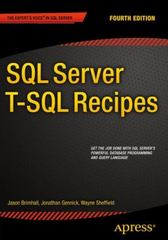Question
Organize your code well and at the end of this work, submit .h and .cpp files that, when compiled with a users main routine and
Organize your code well and at the end of this work, submit .h and .cpp files that, when compiled with a users main routine and linked, will provide them with the functionality of a Linked List data structure storing ints. At the end of this work you should submit a header file List.h that includes the declarations of all classes and functions and List.cpp that defines those classes and functions.
Do not submit a main routine for this homework!
LINKED LIST
In class and in the notes, many of the implementation details were provided for a LinkedList data structure. Your job in this homework is merely to make it more complete.
You should write your LinkedList class to store ints and some helper functions; everything you write should be in a namespace pic10b.
Your LinkedList class must have the following implemented:
a default constructor to start empty;
a constructor that t
assignment operators (both copy and move);
push back to append an int at the end;
pop back to pop off the end element, throwing an exception if the list is empty;
push front to prepend an int at the beginning;
pop front to pop off the first element, throwing an exception if the list is empty;
begin member function overloaded on const, returning iterators to the beginning;
end member function overloaded on const returning iterators to the past-the-end;
insert accepting an interator and value to insert, with the value being inserted before the point where the iterator points;
erase accepting an iterator and removing the pointed-to element; size returning the number of elements in the list;
sort to sort the elements in ascending order from beginning to end;
plus operator
Your iterator and const iterator classes must have the following implemented:
prefix and postfix ++ and - -;
operator==;
operator!=;
dereferencing operator;
plus there should be a conversion from an iterator to const iterator!
In addition to these classes, you should write a seqSearch function that accepts two const iterators and a value; it should search over the range provided by the iterators from the first up to but not including the second iterator. If the sought value is found, it should return true; otherwise false.
In this homework the only Standard Library header files that you are allowed to use are iostream and stdexcept. Do not include any other header files. See sample output (note that not all functions are demoed in this code so be sure to read the instructions carefully and include all the necessary member functions)

#include "List.h"
#include
int main() {
// uses initialzier list constructor
pic10b::LinkedList list0{ 2,4,6,8 };
list0.push_front(0);
list0.push_front(-11);
list0.pop_front();
for (int i : list0) { // for all the ints, print them
std::cout
}
std::cout
pic10b::LinkedList list1; // default constructor
list1.push_back(8);
list1.push_back(3);
list1.push_back(14);
list1.push_back(-13);
list1.push_back(0);
list1.push_back(3); // a second 3!!!
auto it = list1.begin();
++it;
list1.insert(it, 144);
list1.insert(list1.end(), 44);
list1.pop_back();
const pic10b::LinkedList list2 = list1;
list1.sort();
std::cout
std::cout
auto beg1 = list1.begin();
auto end1 = list1.end();
end1--; // so it last element will not be searched through in the searche to come...
auto beg2 = list2.begin();
auto end2 = list2.end();
bool found1 = pic10b::seqSearch(beg1, end1, 144);
bool found2 = pic10b::seqSearch(beg2, end2, 144);
// the boolalpha turns the 0/1 for false/true into "false" and "true"
std::cout
std::cin.get();
return 0;
}
Some initial guidance to get you on your way...
1. Be sure to draw diagrams!
2. More than half of this work is provided to you in the lecture notes, so part of your work could just be transferring that over.
3. You may want to have an extra member variable to track the number of elements in your list (for the size function, especially).
4. There is no random access for the list and that means if you want to sort it, you may have to settle for one of those algorithms thats just O(n 2 )... Just draw out your process out carefully and allow the iterators to manage the values you may want to swap.
Thank you!
Step by Step Solution
There are 3 Steps involved in it
Step: 1

Get Instant Access to Expert-Tailored Solutions
See step-by-step solutions with expert insights and AI powered tools for academic success
Step: 2

Step: 3

Ace Your Homework with AI
Get the answers you need in no time with our AI-driven, step-by-step assistance
Get Started


